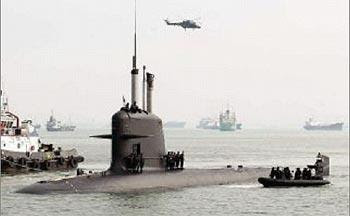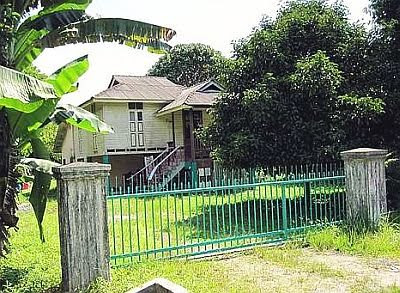Malaysia Secret Police, 1945-1960
By Cheah Boon Kheng
Title: Malaya's Secret Police, 1945-60: The Role Of The Special Branch In The Malayan Emergency.
Malaya's secret service, the Special Branch, succeeded in the fight against armed communist insurgency during the Malayan Emergency (1948-1960). The Emergency was not a conventional war, but rather, a series of skirmishes, ambushes and bloody jungle clashes. The Special Branch played a crucial role in that fight by building up valuable knowledge of the Communist Party and its insurgents. Dr Leon Comber, a Special Branch officer during the colonial period, has unravelled much of the secrecy surrounding the organisation's early history. Using British records, now open to researchers, as well as his own personal experiences, he has brought to light previously unknown details of the Special Branch's leadership, organisational structure, training and modus operandi.
Much of the information regarding the Special Branch is still secret, as not all of its records were handed over by the British to the Malayan government when Malaya became independent in 1957. It is believed that some “sensitive” files were either destroyed or taken back to London. The key to the Special Branch's success in the intelligence war against the communists was the collaboration between the police, the army, the civilian administration and the Special Branch. The army, throughout the Emergency, acted in support of the civil power. Comber notes that this is the opposite of the approach to counter-insurgency that the Americans have adopted in Iraq.
Intelligence operations after the British returned to Malaya in September 1945, following the Japanese surrender, were initially the responsibility of the Malayan Security Service (MSS), which had incorporated the functions of the pre-war Malayan and Singapore Special Branches. The MSS, however, was abolished at the outbreak of the Emergency because it had failed to predict the communist uprising. In 1952, the Malayan and Singapore Special Branches became separate organisations. One reason for this was that the Communist Party of Malaya (CPM) in Singapore was regarded as largely autonomous from the CPM in Malaya. Interestingly, the CPM's secretary-general, Chin Peng, did not seem to place much weight in his autobiography on the activities of the party's Singapore Town Committee in the overall context of the Malayan insurgency.
Comber argues that the Special Branch succeeded not only because it “knew the enemy” but also because it was able to speak and understand the “political language” of the CPM. “The paramount importance of knowledge of the Chinese language was realised early on, especially as the communist insurgents were predominantly Chinese, with relatively few Malay and Indian members,” Comber observes. “Hence every effort was made to strengthen the Chinese component of the Special Branch and increase the number of British officers who had at least a working knowledge of either Cantonese or Hokkien, the two most widely spoken Chinese dialects in Malaya.” Comber himself was a Cantonese- speaking member. He pays tribute to the Asian officers who worked with the British.
The best intelligence about the CPM was obtained by planting agents or “moles” within its ranks. But this was not easy as the guerillas were suspicious of outsiders joining them in the jungle. The Special Branch had gained a considerable amount of information about the CPM before World War II from Lai Tek, the agent it had planted in the party in the 1930s and who rose to become the CPM's secretary-general. But in 1947, he was unmasked by the party's central committee, and fled to Bangkok, where he was eventually killed. Another Special Branch success was the arrest of Lee Meng in 1952. That broke up the CPM's communications system, connecting Ipoh with Singapore and the CPM's central committee in southern Thailand, which she headed.
The Special Branch had to prise open thin, delicate, easily-hidden rice paper “rolls” on which communist couriers carried messages. The intercepted messages had to be decoded and translated. In many instances, CPM defectors became experts in “turning operations” and acquired a formidable reputation as skilful interrogators of their former comrades. Some served the Special Branch so well that they were later given new identities and resettled in Canada and other countries. The Special Branch achieved a great coup with the surrender in April 1958 of Hor Lung, head of the CPM's South Malaya Bureau, to the police in Johor. He was the first central committee member to surrender. For his defection, together with the 160 he brought along with him, he received a hefty financial reward. A few weeks before Hor Lung's surrender, the Special Branch engineered a similar coup in Perak when 118 communist guerillas led by Tan Hong surrendered. Hor Lung's surrender, however, was more significant because he was more senior. In December 1958, just eight months after his surrender, Johor was declared a white area, free of communist activity.
And when Malaya became independent in 1957, it inherited one of the most effective police intelligence agencies in Southeast Asia. — The Straits Times
The writer is a visiting professor in the Department of History at the National University of Singapore.


Comments